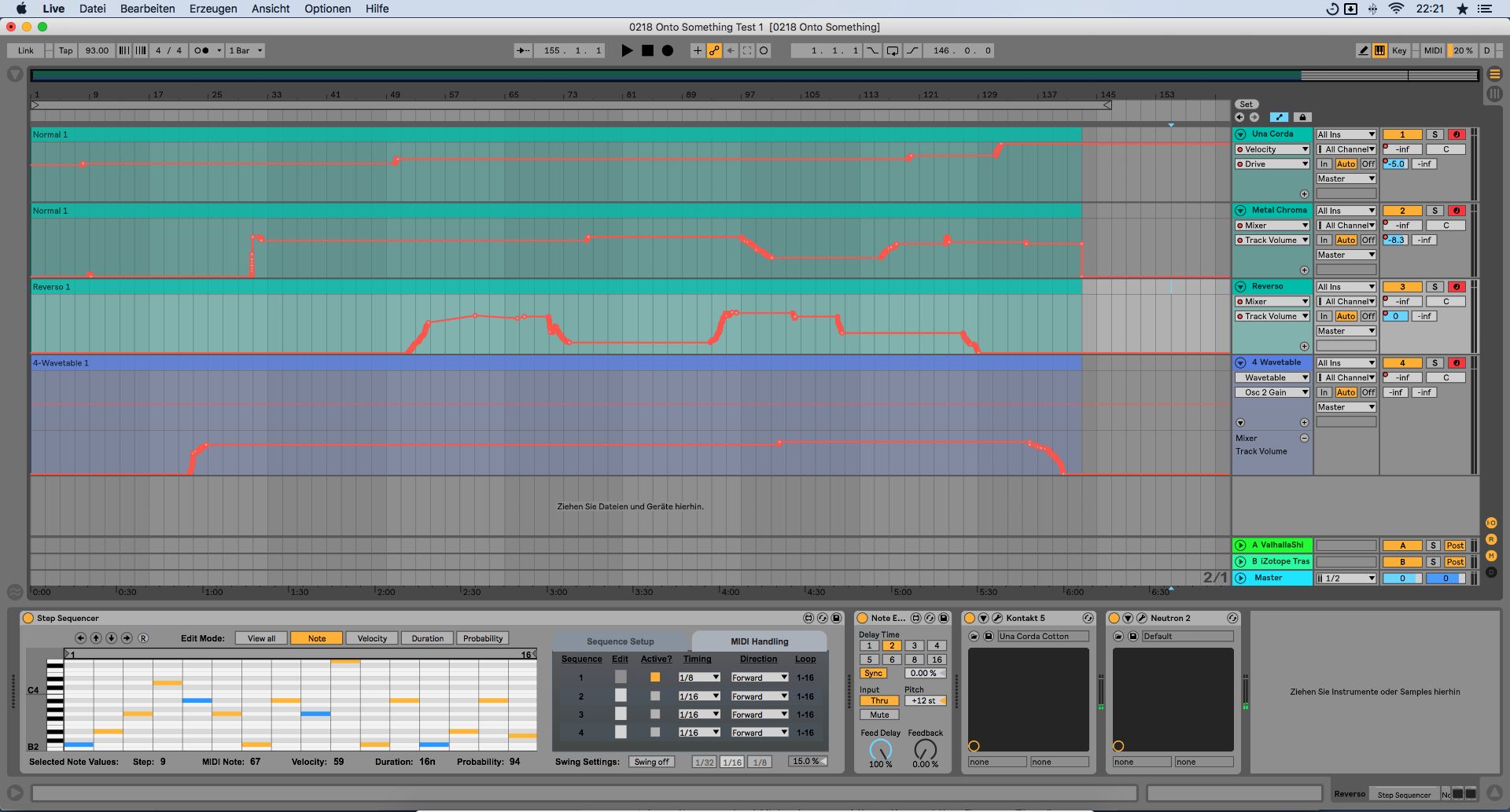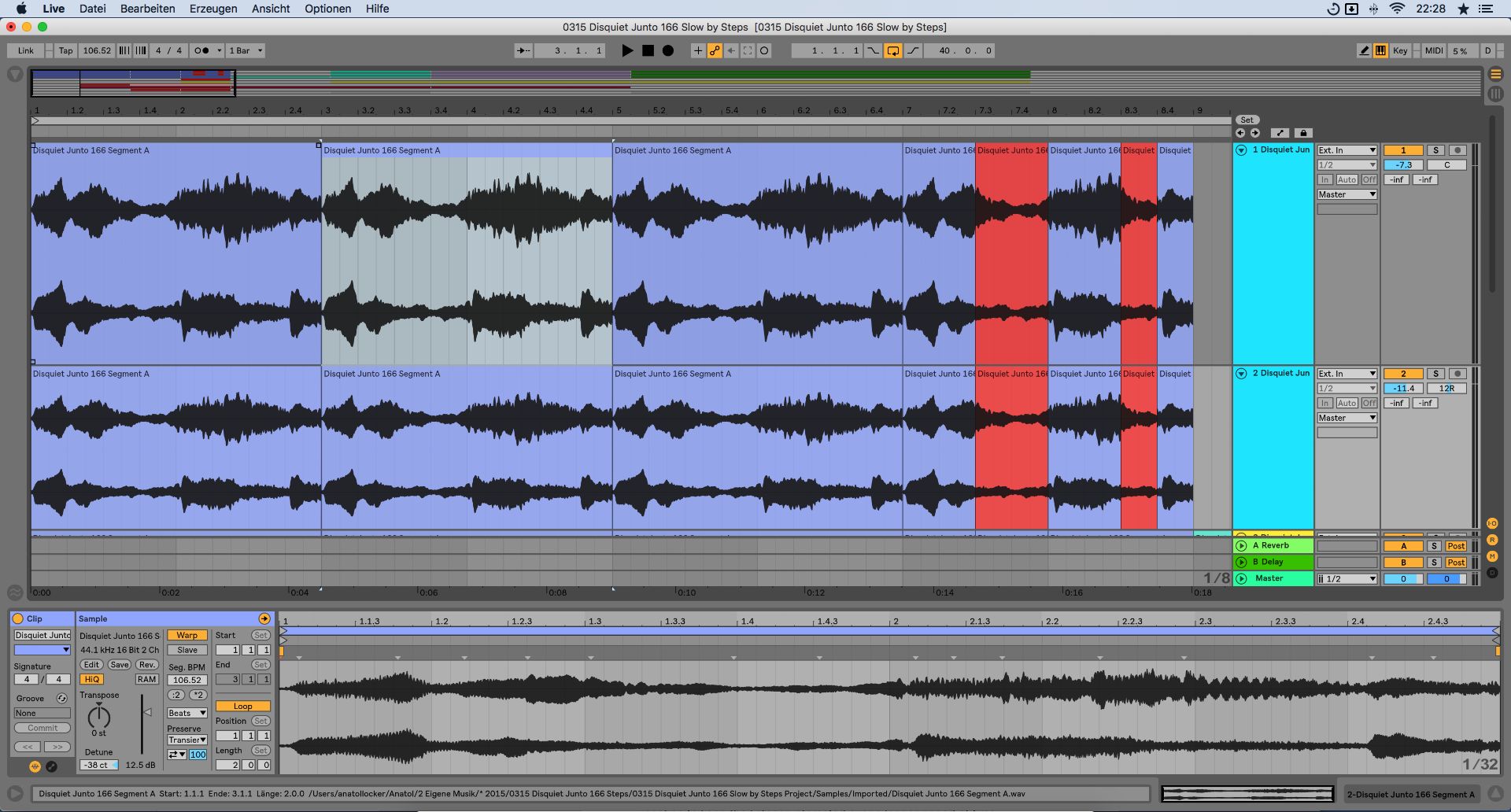Loops and repetition are essential in modern music. But what if you want to go beyond the repetition? Here are some ideas how to "break the grid“.
Here it comes, the best moment of your favorite track - pure bliss! So, you want to relive it again? Just loop the best part and let it go on forever. Loops can give us musical joy over and over again. The brain, always keen to find patterns in anything we hear and see, loves repetition - that’s why loop based music is so popular and appealing.
Before the 1980s, repeating structures already played a role in popular music (think of guitar riffs and the ever so popular pop song structure). That changed radically when computers and samplers became affordable. Hip Hop without loops? Unthinkable. Drum & Bass without the Amen Break? Wouldn’t have happened. Modern dance music without repeating patterns? Unthinkable.
But for some musicians, that relationship has cooled off. We’ve been listening to loop and pattern-based music for 30 years now, and let’s be honest, it’s not as fascinating anymore. 125 BPM, 4/4, loops and patterns can be joyful, but sometimes it’s getting… well, repetitive.
So, what can you do to keep your music fresh and interesting, even if you are working with loops? Here are some ideas how you can go "beyond“ with your standard DAW. The ideas are ordered from "pretty obvious“ to "going pretty far out“.
Tip #1: Use Automation To Generate Variation
The most obvious way of changing the sound of a repetitive pattern is the use of filters. By subtracting parts of the spectrum and then adding them again, patterns get more interesting. Thankfully, recording this as automation is extremely easy in most DAWs - you should make extensive use of this feature.
Filters aren’t the only way to spice up loops. Add reverb and delay, set rhythmic EQ changes, start crossfading - just start automating the hell out of your loops. Every bit of clever automation will keep the listener happy and make your songs more interesting.
Also, there are several VSTs (like Effectrix or Turnado from Sugar Bytes) that will allow you to record variations of your loop.
Also, you should take a look at Output’s Arcade, which goes way beyond most sample slicers. This VST plug-in allows you to create endless variations of audio loops. Simply drag a sample onto the user interface or choose one from the library. Then you can alter it by pressing keys on a MIDI keyboard - white keys play a loop, black keys add editable effects, modulation, or even radically alter the loop.
Tip #2: Splice And Rearrange
To get past the boredom of an unchanging repeating loop, you can break it into smaller sections and start rearranging the bits manually. This is great if you have introduced the loop already to the listener - so breaking it in a meaningful way can result in an interesting friction.
If you’re working on 4/4 metric, this works well especially well at at the end of a 4 bar loop - slice the sample, start rearranging it and throw in some variation at the end.
Tip #3: Start Using Polyrhythms
Polyrhythms are great if you are looking for musical variation. They are a combination of two or more rhythms played simultaneously while moving at the same linear tempo - so you’ll get interesting variations without breaking the grid.
To achieve polyrhythmic structures, you can use sequencers. Let’s assume you are playing in a 4/4 grid. Fire up a MIDI sequencer and generate three repeating musical lines that have a different length, i.e. 12 bars, 8 bars and 6 bars. This leads to a non-repeating pattern that sounds familiar, but has enough variation to keep the listener interested over a longer period of time.
Polyrhythms can get even more complex by adding uneven tempi - for more information, you should listen to some of the patterns at the Five over Three website at http://www.fiveoverthree.com.
Tip #4: Free-Running Non-Linear Loops
Apply the polyrhythmic principle to audio samples and you’ll get something that’s not for the faint of heart. Let’s imagine you have two audio snippets - some chords played at 70 BPM, and an accompanying melody line at 84 BPM. Both loops have different lengths. What happens if you throw these two pieces together? The timing gets totally out of sync. Record the results for several bars and start listening for what captures your attention musically. Cut out the most interesting parts - and leave them unchanged.
One of the beautiful things our brains can do is to catch up on complex sounds - and find the moment a loop starts repeating. So even if the music seems to be out of sync, after listening to it for two or three times, the listener will know it’s an odd loop. Thrown in carefully in a composition, this can be a significant gamechanger to a song.
Tip #5: DIY Your Loops
It has become easy to make great sounding music today (which is great). Sample libraries are produced to perfection, so that every second sounds as great as the last one. This is great for club music, where every beat has to be on the grid. But there‘s no reason why you should repeat that for other genres.
The easiest way to humanize music isn’t by tweaking the "humanize“ button, but by playing it yourself. Sure, if you want to play chords, melodies or percussion for several beats that needs practice, and that‘s not something that most of us want to invest some time and effort into. But don‘t be lazy: don’t just pick the best bit from your performance. Instead, try to play that 16-bar by hand. If you pick up the bass and or practice the piano line, you can capture these personal magic moments (that’s what music is all about, right)? This will most likely result in a more personal, livelier, better sounding track.
Tip #6: Play A Secret Rhythm
You might familiar with the work of electronic musician Burnt Friedman and Jaki Liebezeit (drummer of Can fame) - if not, head over to Burnt Friedman’s label Nonplace - it’s definitely worth a listen. Over more than a decade, the German duo explored rhythmic patterns that went way beyond the 4/4 metric.
So what happens if you change the metric of your track to 3/4, 7/8, 5/4, 12/8 or 6/8? Playing in a different rhythm requires some practice, but can be highly rewarding. Most DAWs allow you to change the metric on the fly. Just give it a try and see how it this mental pattern chance clicks with you.
Tip #7: Leave The Grid
Some musical styles allow you to totally leave the grid and work freely. Ambient music is the easiest way of getting off the grid, but also singer-songwriter type music and jazz occasionally allow you to find your own rhythm. This can be very rewarding, as you start playing when you want to - and not when you have to because the beat dictates it.
Tip #8: Read And Listen
There are tons of great tips, challenges and ideas out there that will help you to make more interesting music and get out of your old habits. Watch lessons in the AskAudio Academy, read Ethan Heins’ blog on musical teaching, participate in a Disquiet Junto challenge to leave your musical comfort zone. Last but not least, "Making Music: 74 Creative Strategies for Electronic Music Producers“ from Dennis DeSantis is an excellent book that will help you analyzing problems with your compositions.
That includes loops, of course.










 © 2024 Ask.Audio
A NonLinear Educating Company
© 2024 Ask.Audio
A NonLinear Educating Company
Discussion
Want to join the discussion?
Create an account or login to get started!